Region Western philosophy School Continental philosophy | Name Hannah Arendt Role Philosopher | |
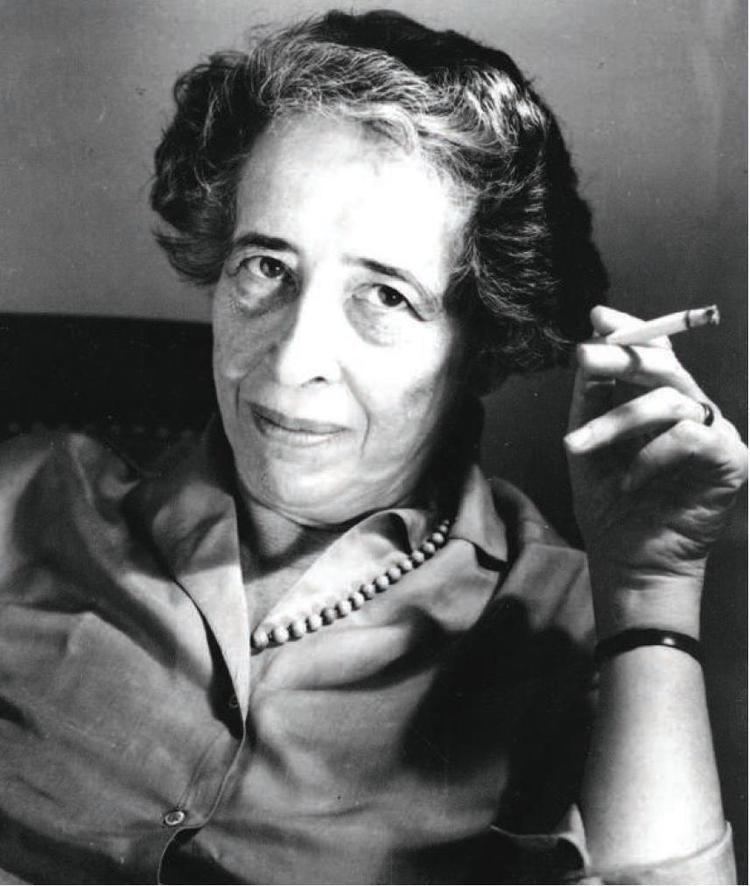 | ||
Born 14 October 1906 ( 1906-10-14 ) Linden, German Empire (present-day Hanover, Germany) Nationality Prussia (until 1937)
United States (1951) Alma mater University of Marburg
University of Heidelberg Website www.hannaharendtcenter.org Era 20th-century philosophy Died December 4, 1975, New York City, New York, United States Influenced by Martin Heidegger, Immanuel Kant, Karl Marx, Plato Spouse Heinrich Blucher (m. 1940–1970), Gunther Anders (m. 1929–1937) Books Eichmann in Jerusalem, The Human Condition, The Origins of Totalitarianism, The life of the mind, On Violence Similar People Adolf Eichmann, Martin Heidegger, Margarethe von Trotta, Michel Foucault, Immanuel Kant | ||
Hannah arendt trailer 1 2013 biography movie hd
Johanna "Hannah" Arendt ( or ; [ˈaːʀənt]; 14 October 1906 – 4 December 1975) was a German-born American political theorist. Her 18 books and numerous articles, ranging from works on totalitarianism to thinking and judging, greatly influence political philosophy to this day. Arendt is widely considered one of the most important thinkers of the twentieth century.
Contents
- Hannah arendt trailer 1 2013 biography movie hd
- Hannah arendt official us release trailer 1 2013 biography movie hd
- Early life and education
- Career
- Paris
- New York
- Post war
- Death
- The Origins of Totalitarianism
- The Human Condition
- Men in Dark Times
- Eichmann in Jerusalem A Report on the Banality of Evil
- On Revolution
- On Violence
- The Life of the Mind
- Arendts critique of human rights
- Legacy
- Commemoration
- Selected works
- References
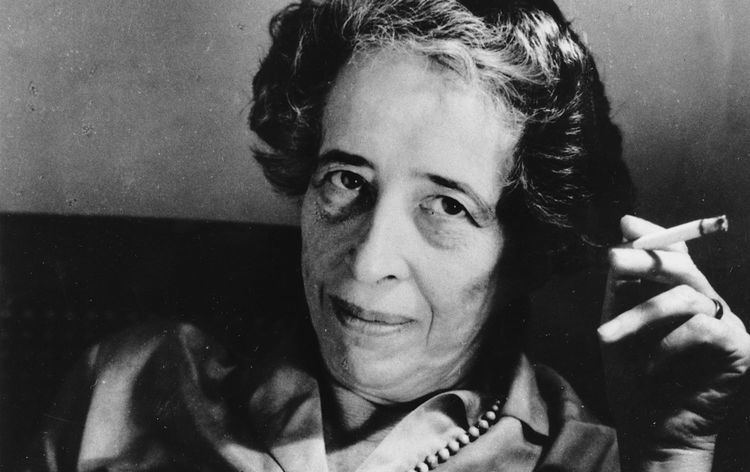
She escaped from Germany during the Holocaust, becoming an American citizen. Her works deal with the nature of power and the subjects of politics, direct democracy, authority, and totalitarianism. The Hannah Arendt Prize is named in her honor.
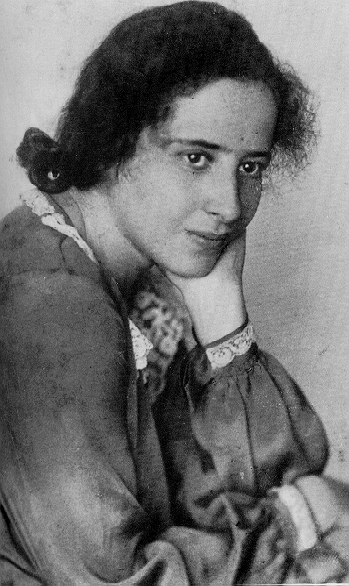
Hannah arendt official us release trailer 1 2013 biography movie hd
Early life and education
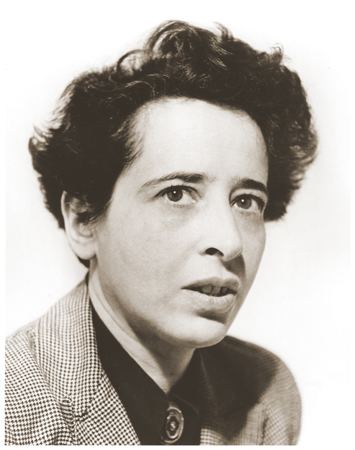
Arendt was born into a secular family of German Jews in Linden (now a part of Hanover), the daughter of Martha (born Cohn) and Paul Arendt. She grew up in Königsberg (renamed Kaliningrad when it was annexed to the Soviet Union in 1946) and Berlin. Arendt's family was thoroughly assimilated and she later remembered: "With us from Germany, the word 'assimilation' received a 'deep' philosophical meaning. You can hardly realize how serious we were about it."
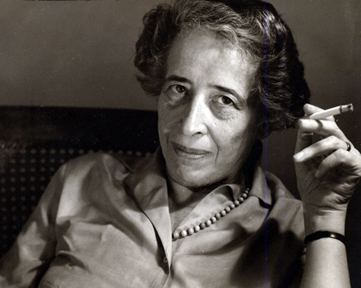
Arendt came to define her Jewish identity negatively after encountering antisemitism as an adult. She came to greatly identify with Rahel Varnhagen, a 19th-century Prussian hostess who desperately wanted to assimilate into German culture, only to be rejected because she was born Jewish. Arendt later said of Varnhagen that she was "my very closest woman friend, unfortunately dead a hundred years now."
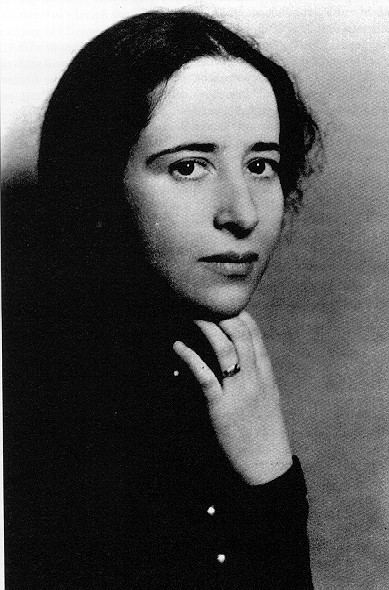
After completing her high school studies in 1924, she enrolled at the University of Marburg, where she spent a year studying philosophy with Martin Heidegger. According to Hans Jonas, her only German-Jewish classmate, in her year at the University, Arendt began a long and problematic romantic relationship with Heidegger for which she was later criticized, because of his support for the Nazi Party while he was rector at the University of Freiburg. After a year at Marburg, Arendt spent a semester at Freiburg University, attending the lectures of Edmund Husserl. In 1926 she moved to the University of Heidelberg, where in 1929 she completed her dissertation under the existentialist philosopher-psychologist Karl Jaspers. Her thesis was Der Liebesbegriff bei Augustin: Versuch einer philosophischen Interpretation ("On the concept of love in the thought of Saint Augustine: Attempt at a philosophical interpretation").
Career
In 1929, in Berlin, the year her dissertation was published, she married Günther Stern, later known as Günther Anders. They divorced in 1937. In 1932, Arendt was deeply troubled by reports that Heidegger was speaking at National Socialist meetings. She wrote, asking him to deny that he was attracted to National Socialism. Heidegger replied that he did not seek to deny the rumors (which were true), and merely assured her that his feelings for her were unchanged. As a Jew in Nazi Germany, Arendt was prevented from making a living and discriminated against because she was Jewish. She researched antisemitism for some time before being arrested and briefly imprisoned by the Gestapo in 1933.
Paris
In 1933, Arendt left Germany for Czechoslovakia and then Geneva, where she worked for some time at the League of Nations. Then, in Paris, she befriended the Marxist literary critic and philosopher Walter Benjamin, her first husband's cousin. While in France, she worked to help Jewish refugees. In 1937, she was stripped of her German citizenship. In 1940, she married the German poet and Marxist philosopher Heinrich Blücher, a founding member of the KPD who had been expelled due to his work in the Conciliator faction. Later that year, after the German military occupation of northern France, the Vichy regime began deporting foreign Jews to internment camps in the unoccupied south of France, and she was interned in Camp Gurs as an "enemy alien".
New York
Like many others, Arendt was able to leave Gurs after a few weeks, and left France in 1941 with her husband and her mother, traveling via Portugal to the United States. They relied on visas illegally issued by the American diplomat Hiram Bingham, who aided roughly 2,500 Jewish refugees in this way. Varian Fry, another American humanitarian, paid for their travel and helped obtain the visas. Upon arriving in New York, Arendt became active in the German-Jewish community. From 1941 to 1945, she wrote a column for the German-language Jewish newspaper Aufbau. From 1944, she directed research for the Commission of European Jewish Cultural Reconstruction and in that capacity traveled to Europe after the war.
Post-war
During World War II, Arendt worked for Youth Aliyah, a Zionist organization, which saved thousands of children from the Holocaust and settled them in the British Mandate of Palestine. She became a close friend of Karl Jaspers and his wife, developing a deep intellectual friendship with him. She began corresponding with the American author Mary McCarthy around this time.
In 1950, Arendt became a naturalized citizen of the United States. The same year, she started seeing Heidegger again, and had what the American writer Adam Kirsch called a "quasi-romance" that lasted for two years with the man who once had been her mentor, teacher and lover. During this time, Arendt began to defend Heidegger from criticism of his actions under the Third Reich when he had been a proud member of the NSDAP, portraying Heidegger as a naïve man swept up by forces beyond his control, and that at any rate Heidegger's philosophy had nothing to do with National Socialism. She served as a visiting scholar at the University of Notre Dame, University of California, Berkeley, Princeton University, and Northwestern University. In 1959, she was named the first female lecturer at Princeton. She also taught at the University of Chicago from 1963 to 1967, where she was a member of the Committee on Social Thought; The New School in Manhattan where she taught as University Professor from 1967 until her death in 1975; Yale University, where she was a fellow, as well as the Center for Advanced Studies at Wesleyan University (1961–62, 1962–63).
In 1961 while covering the trial of Adolf Eichmann in Jerusalem, Arendt wrote to Jaspers a letter that Kirsch described as reflecting "pure racism" towards Sephardic Jews from the Middle East and Ashkenazi Jews from Eastern Europe. She wrote: "On top, the judges, the best of German Jewry. Below them, the prosecuting attorneys, Galicians, but still Europeans. Everything is organized by a police force that gives me the creeps, speaks only Hebrew, and looks Arabic. Some downright brutal types among them. They would obey any order. And outside the doors, the oriental mob, as if one were in Istanbul or some other half-Asiatic country." Though Arendt remained a Zionist activist both during and after World War II, she made it clear that she favored the creation of a Jewish-Arab federated state in Palestine, rather than a purely Jewish state. She believed that this was a way to address Jewish statelessness and to avoid the pitfalls of nationalism.
She was elected a fellow of the American Academy of Arts and Sciences in 1962 and a member of the American Academy of Arts and Letters in 1964.
In 1974, Arendt was instrumental in the creation of Structured Liberal Education (SLE) at Stanford University. She wrote a letter to the president of Stanford to persuade the university to enact Mark Mancall's vision of a residentially-based humanities program.
Death
Arendt died in New York City on 4 December 1975, at age 69, of a heart attack. She was buried alongside her husband, Heinrich Blücher, at Bard College in Annandale-on-Hudson, New York.
The Origins of Totalitarianism
Arendt's first major book, The Origins of Totalitarianism (1951), examined the roots of Communism and Nazism. In it, Arendt argues that totalitarianism was a "novel form of government," different from other forms of tyranny in that it applied terror to subjugate mass populations rather than just political adversaries. The book was opposed by some on the Left on the grounds that it presented the two movements as equally tyrannical. She further contends that Jewry was not the operative factor in the Holocaust, but merely a convenient proxy. Totalitarianism in Germany was, in the end, about terror and consistency, not eradicating Jews only.
The Human Condition
In what is arguably her most influential work, The Human Condition (1958), Arendt differentiates political and social concepts, labor and work, and various forms of actions; she then explores the implications of those distinctions. Her theory of political action, corresponding to the existence of a public realm, is extensively developed in this work. Arendt argues that, while human life always evolves within societies, the social part of human nature, political life, has been intentionally realized in only a few societies as a space for individuals to achieve freedom. Conceptual categories, which attempt to bridge the gap between ontological and sociological structures, are sharply delineated. While Arendt relegates labor and work to the realm of the social, she favors the human condition of action as that which is both existential and aesthetic.
Men in Dark Times
Her collection of essays, Men in Dark Times, presents intellectual biographies of some creative and moral figures of the 20th century, such as Walter Benjamin, Karl Jaspers, Rosa Luxemburg, Hermann Broch, Pope John XXIII, and Isak Dinesen.
Eichmann in Jerusalem: A Report on the Banality of Evil
In her reporting of the 1961 Adolf Eichmann trial for The New Yorker, which evolved into Eichmann in Jerusalem: A Report on the Banality of Evil (1963), she coined the phrase "the banality of evil" to describe the phenomenon of Eichmann. She examined the question of whether evil is radical or simply a function of thoughtlessness, a tendency of ordinary people to obey orders and conform to mass opinion without a critical evaluation of the consequences of their actions. She was sharply critical of the way the trial was conducted in Israel. She also was critical of the way that some Jewish leaders, notably M.C. Rumkowski, acted during the Holocaust. This caused a considerable controversy and even animosity toward Arendt in the Jewish community. Her friend Gershom Scholem, a major scholar of Jewish mysticism, broke off relations with her. Arendt was criticized by many Jewish public figures, who charged her with coldness and lack of sympathy for the victims of the Holocaust. Because of this lingering criticism, neither this book nor any of her other works were translated into Hebrew until 1999. This controversy was answered by Hannah Arendt in the book's Postscript.
The controversy began by calling attention to the conduct of the Jewish people during the years of the Final Solution, thus following up the question, first raised by the Israeli prosecutor, of whether the Jews could or should have defended themselves. I had dismissed that question as silly and cruel, since it testified to a fatal ignorance of the conditions at the time. It has now been discussed to exhaustion, and the most amazing conclusions have been drawn. The well-known historico-sociological construct of "ghetto mentality" … has been repeatedly dragged in to explain behavior which was not at all confined to the Jewish people and which therefore cannot be explained by specifically Jewish factors. … This was the unexpected conclusion certain reviewers chose to draw from the "image" of a book, created by certain interest groups, in which I allegedly had claimed that the Jews had murdered themselves.
Arendt ended the book by writing:
Just as you [Eichmann] supported and carried out a policy of not wanting to share the earth with the Jewish people and the people of a number of other nations—as though you and your superiors had any right to determine who should and who should not inhabit the world—we find that no one, that is, no member of the human race, can be expected to want to share the earth with you. This is the reason, and the only reason, you must hang.
On Revolution
Arendt's novel On Revolution presents a comparison of two of the main revolutions of the 18th century, the American and French Revolutions. She goes against a common view of both Marxist and leftist views when she argues that France, while well studied and often emulated, was a disaster and that the largely ignored American Revolution was a success. The turning point in the French Revolution occurred when the leaders rejected their goals of freedom in order to focus on compassion for the masses. In the United States, the Founding Fathers never betray the goal of Constitutio Libertatis. However, Arendt believes the revolutionary spirit of those men had been lost, and advocates a “council system” as an appropriate institution to regain that spirit.
On Violence
Arendt's essay On Violence distinguishes between violence and power. She maintains that, although theorists of both the Left and Right regard violence as an extreme manifestation of power, the two concepts are, in fact, antithetical. Power comes from the collective will and does not need violence to achieve any of its goals, since voluntary compliance takes its place. As governments start losing their legitimacy, violence becomes an artificial means toward the same end and is, therefore, found only in the absence of power. Bureaucracies then become the ideal birthplaces of violence since they are defined as the "rule by no one" against whom to argue and, therefore, recreate the missing links with the people they rule over.
The Life of the Mind
Her posthumous book, The Life of the Mind (1978, edited by Mary McCarthy), remained incomplete. During Arendt's tenure at the New School, in 1974, she presented a graduate level Political Philosophy class entitled, "Philosophy of the Mind". It was during these class lectures that Arendt crystallized her concepts. The class was based on her working draft of "Philosophy of the Mind", which was later edited to "Life of the Mind". Arendt's working draft of Philosophy of the Mind was distributed to graduate students at the New School during her visiting professorship in 1974. Also, stemming from her Gifford Lectures at the University of Aberdeen in Scotland, her last writing focused on the mental faculties of thinking and willing. In a sense, Life of the Mind went beyond her previous work concerning the vita activa. In her discussion of thinking she focuses mainly on Socrates and his notion of thinking as a solitary dialogue between Me and Myself. This appropriation of Socrates leads her to introduce novel concepts of conscience (which gives no positive prescriptions, but instead, tells me what I cannot do if I would remain friends with myself when I re-enter the two-in-one of thought where I must render an account of my actions to myself) and morality (an entirely negative enterprise concerned with non-participation in certain actions for the sake of remaining friends with one's self).
Arendt's critique of human rights
In The Origins of Totalitarianism Hannah Arendt devotes a lengthy chapter to a critical analysis of human rights. Arendt isn’t skeptical of the notion of political rights in general, but instead defends a national or civil conception of rights. Human rights, or the Rights of Man as they were commonly called, are universal, inalienable and possessed simply in virtue of being human. In contrast, civil rights are possessed in virtue of belonging to a political community, most commonly by being a citizen. Arendt’s primary criticism of human rights is that they are ineffectual and illusory because their enforcement is in tension with national sovereignty. She argued that since there is no political authority above that of sovereign nations, state governments have little incentive to respect human rights when such policies conflict with national interests. This can be seen most clearly by examining the treatment of refugees and other stateless people. Since the refugee has no state to secure their civil rights, the only rights they have to fall back on are human rights. In this way Arendt uses the refugee as a test case for examining human rights in isolation from civil rights.
Arendt’s analysis draws on the refugee upheavals in the first half of the 20th century along with her own experience as a refugee fleeing Nazi Germany. She argued that as state governments began to emphasize national identity as a prerequisite for full legal status, the number of minority resident aliens increased along with the number of stateless persons whom no state was willing to legally recognize. The two potential solutions to the refugee problem, repatriation and naturalization, both proved incapable of solving the crisis. Arendt argued that repatriation failed to solve the refugee crisis because no government was willing to take them in and claim them as their own. When refugees were forcibly deported to neighboring countries, such immigration was deemed illegal by the receiving country, and so failed to change the fundamental status of the migrants as stateless. Attempts at naturalizing and assimilating refugees also had little success. This was primarily due to resistance from both state governments and the majority of citizens, since both tended to see the refugees as undesirables who threatened their national identity. Resistance to naturalization also came from the refugees themselves who resisted assimilation and attempted to maintain their own ethnic and national identities. Arendt contends that neither naturalization nor the tradition of asylum were capable of handling the sheer number of refugees. Instead of accepting some refugees with legal status, the state often responded by denaturalizing minorities who shared national or ethnic ties with stateless refugees.
Arendt argues that the consistent mistreatment of refugees, most of whom were placed in internment camps, is evidence against the existence of human rights. If the notion of human rights as universal and inalienable is to be taken seriously, they must be realizable given the features of the modern liberal state. Arendt contends that they are not realizable because they are in tension with at least one feature of the liberal state, national sovereignty. One of the primary ways in which a nation exercises sovereignty is through control over national borders. State governments consistently grant their citizens free movement to traverse national borders. In contrast, the movement of refugees is often restricted in the name of national interests. This presents a dilemma for liberalism in that liberal theorists are typically committed to both human rights and the existence of sovereign nations.
Some critics find anti-black racism in Arendt's works, including her references to "savages" in Africa and her analysis of the right of white Americans to enforce racial segregation. Arendt wrote of segregation: ‘The right to free association, and therefore to discrimination, has greater validity than the principle of equality," and that therefore there cannot be a right to enter any hotel or recreation area.
Legacy
In the intended third volume of The Life of Mind, Arendt was planning to engage the faculty of judgment but she did not live to write it. Nevertheless, although her notion of judging remains unknown, Arendt did leave manuscripts (such as Thinking and Moral Considerations and Some Questions on Moral Philosophy) and lectures (Lectures on Kant's Political Philosophy) concerning her thoughts on this mental faculty. The first two articles were edited and published by Jerome Kohn, an assistant of Arendt and a director of the Hannah Arendt Center at The New School in New York, and the last was edited and published by Ronald Beiner, professor of political science at the University of Toronto. Her personal library was deposited at Bard College at the Stevenson Library in 1976, and includes approximately 4,000 books, ephemera, and pamphlets from Arendt's last apartment. The college has begun archiving some of the collection digitally, which is available at The Hannah Arendt Collection.
Arendt's life and work are still part of current culture and thought. In 2012 the film Hannah Arendt (film) was produced and distributed depicting the controversy over Arendt's coverage of the Eichmann trial. In 2016 the filmmaker Ada Ushpiz produced a documentary on Hannah Arendt, "Vita Activa: The Spirit of Hannah Arendt." The New York Times designated it a NYT's critics pick. Since the election of Donald Trump to the US Presidency, some journals are resurrecting her ideas to help make sense of the current situation.
